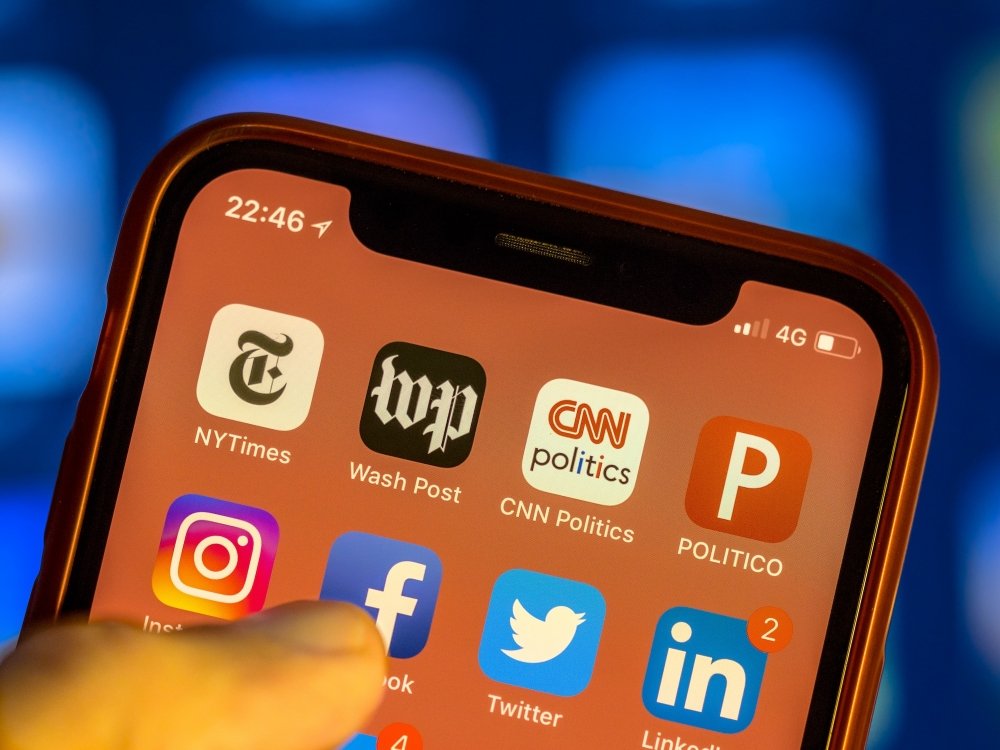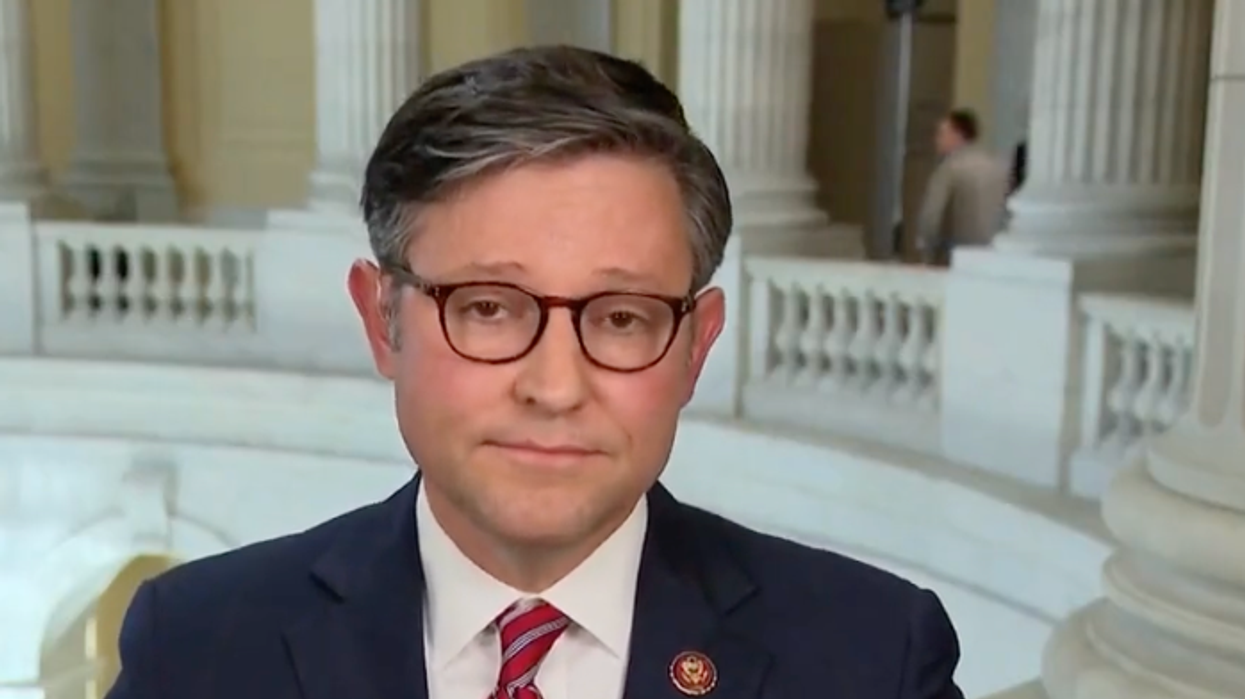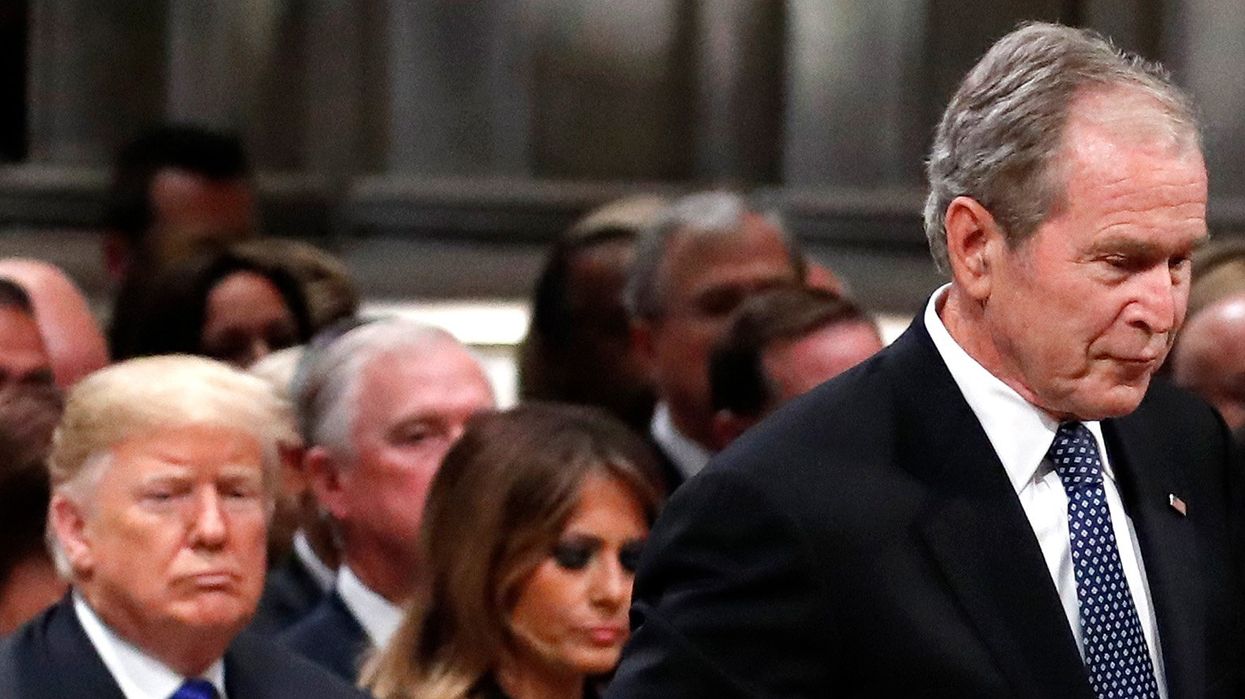Thom Hartmann
October 31, 2023

Image by Dee from Pixabay
Many of America’s oligarchs — the people whose great wealth and/or ownership of media properties gives them tremendous influence over our politics — believe they’re arguing for policies that will produce a “better” America. Or at least an America that’s better and safer for oligarchs and their families and businesses
Tragically, they’re wrong. Their support for GOP-aligned racist, “free market deregulation,” and climate denial policies are tearing America apart and will threaten their grandchildren every bit as much as they do yours and mine.
Nonetheless, in America and increasingly around the world, oligarchs taking over the political dialogues of nations are all the rage. From America to Turkey to Russia to the Philippines, oligarchs have either risen to near-absolute power or bought off so many politicians that they have effective control of entire political parties and thus entire nations.
Increasingly, America’s oligarch problem has become the world’s oligarchy problem, as country after country follows the GOP’s example and sidelines labor rights, women’s rights, voting rights, and democracy itself.
When the Constitution was being written there were multiple debates about how to prevent our republic from turning into a dictatorship or an oligarchy. Thomas Jefferson was worried about too much power being invested in the president; John Adams was concerned that wealthy oligarchs would either get themselves elected to the senate or simply purchase senators for their own ends.
While Jefferson was still the US envoy to France and living in Paris, just after the Constitution had been written but a year before it would be ratified, Adams wrote him on December 6, 1778 that:
“You are afraid of the one — I, of the few. We agree perfectly that the many should have a full fair and perfect Representation. — You are Apprehensive of Monarchy; I, of Aristocracy.
Today we have both.
Donald Trump was both an oligarch and very much wanted and tried to become America’s first Caesar, an emperor with unlimited power who would hold his office for life. At the same time, because of the corrupt Citizens United decision by 5 Republicans on the Court, both the Senate, House, and much of America’s media are very much under the control of our nation’s rightwing oligarchs.
It’s a phenomenon that’s popping up worldwide. In a new book, The Oligarch’s Grip, authors David Lingelbach and Valentina Rodríguez Guerra take the definition of “oligarch” beyond the common understanding of a person who’s morbidly rich.
In a review of the book for The Financial Times, Simon Kuper writes:
“The book distinguishes various types of oligarchs. ‘Business oligarchs’ like Musk turn wealth into political power, while ‘political oligarchs’ go the other way. A classic example of the latter, says the book, is Vladimir Putin, ‘a billionaire with nuclear weapons’. Oligarch presidents have decision-making power, oligarch influencers such as Rupert Murdoch, Charles Koch and George Soros set agendas, while platform owners such as Musk, Mark Zuckerberg and Google’s Larry Page have rewired the information streams that flow into our brains.”
The authors of The Oligarch’s Grip argue that a true oligarch is a rich person who uses his or her (it’s almost always a man, though) money to seize political power (whether by running for office or simply buying and owning politicians) or an elected or appointed official who used their political position and power to make a boatload of money.
A true oligarch, they write, is “someone who secures and reproduces wealth or power, then transforms one into the other.”
For example, when South Africa was working out their post-apartheid constitution, one of America’s largest corporations loaned them a lawyer who helped get corporate personhood written into their constitution, along with fighting most efforts at limiting money in South African politics.
The result was predictable: current South African president Cyril Ramaphosa rose from a union leader through the political ranks to becoming, in 1994, the chairman of the Constitutional Assembly which wrote the new Constitution.
Knowing the new rules of the game he’d helped write, he retired from politics in 1996 to seek his fortune and, using his considerable political connections and power, ended up in short order as one of South Africa’s dozen or so billionaire oligarchs. Once he became fabulously rich through his political connections, he got himself elected president in 2018 and was recently re-elected.
Here in the USA, we’ve seen this cycle play out more than once. In the late 19th and early 20th centuries, American oligarchs had largely avoided politics until World War I. Following the war and Woodrow Wilson’s raising the top tax rate to 91 percent, many jumped in with both feet when Warren Harding ran for president on the Republican ticket in 1920.
The uber-wealthy and owners of America’s largest newspapers loved it. They threw a small fortune into getting Harding elected and he won the popular vote by 26.2 percent, the largest margin in American history.
For the next nine years Republicans went on a tax-cutting and regulation-destroying spree known as the “Roaring 20s,” making the merely rich into the morbidly rich while keeping average working people in poverty by violently fighting that era’s union movement, routinely murdering strikers and union leaders.
Their excesses led straight to the stock market crash of October 1929, which kicked off the Republican Great Depression and brought Democratic President Franklin D. Roosevelt into office. Roosevelt gleefully took on America’s most toxic oligarchs, saying, “They hate me, and I welcome their hatred!”
Between that and the failed attempt the DuPont family and a handful of other oligarchs allegedly organized to kidnap and kill FDR (ended by General Smedley Butler), America’s oligarchs decided to pretty much stay out of politics after World War II.
The Nixon and Agnew bribery scandals of the late 1960s and early 1970s produced a whole new crop of laws further limiting America’s oligarchs from participating in politics. The top tax rate was generally around 90 percent, giving the very wealthy an incentive to leave their money in their businesses and pay their employees well. Which is why from the 1930s through the end of the 1970s the American middle class grew in both numbers and wealth faster than any the world had ever seen.
But then in the 1970s five Republicans on the Supreme Court, for the first time in American history, began the process of legalizing political bribery, first ruling that laws limiting big money in politics were suppressing the “free speech” rights of billionaires (1976) and then extending that “right to bribe” to corporations as well (1978).
This was a huge flag for America’s oligarchs signaling that, like during Harding’s, Coolidge’s, and Hoover’s time, the GOP was again up for sale to the highest bidder. Those with money began shoveling it at politicians who’d do their bidding, and politicians with power began to get seriously rich from their association with the oligarchs.
History knows that time as the “Reagan Revolution.”
In 2010, five Republicans on the Supreme Court doubled down on their predecessor’s work, making it super easy for billionaires to give lavish gifts and support to Supreme Court justices and members of Congress. That Citizens United decision blew open the doors to oligarchy in America.
A new report from Americans for Tax Fairness details the damage these democracy-destroying decisions, made by SCOTUS members who, themselves, were at the time being groomed by billionaires, have done to our political system.
In 2010, American billionaires spent a mere $31 million on elections. Buckley and Bellotti notwithstanding, there were still substantial limits on dark money and big money in politics. But that was the year the Court handed down their Citizens United decision.
That number jumped to $231 million in the 2012 and 2014 elections, and over $600 million for both 2016 and 2018.
The blowout came in 2020, when Trump was running for re-election and there was a very real chance the billionaires could seize complete control of the federal government.
They spent a total of $2,362,000,000 in that election, with $1.2 billion of it going to elect conventional politicians who would then be beholden to their patrons.
As Americans for Tax Fairness notes:
“The report finds that almost 40% of all billionaire campaign contributions made since 1990 occurred during the 2020 season. Billionaires had a lot more money to give politicians and political causes in 2020 as their collective wealth jumped by nearly a third, or over $900 billion, to $3.9 trillion between the March beginning of the pandemic and a month before Election Day. Billionaire fortunes have continued to climb since: as of October 2021, billionaires were worth $5.1 trillion, more than a 20-fold increase in their collective fortune since 1990, when it stood at $240 billion, adjusted for inflation.
“These campaign donations are a profitable investment: they buy access to politicians and influence over tax and other policies that can save tycoons billions of dollars. While that $1.2 billion ‘investment’ in 2020 was massive, it totaled less than 0.1% of billionaire wealth (and less than one day’s worth of their pandemic wealth growth), leaving almost unlimited room for future growth in billionaire campaign spending.”
And next year will be far worse. As NBC News tells us:
“Political ad spending is projected to reach new heights by the end of the 2024 election cycle, eclipsing $10 billion in what would amount to the most expensive two years in political history.”
This crisis of oligarchy isn’t limited to the US. The Thatcher/Reagan “great neoliberal experiment” of the late 1970s and 1980s — which included deregulation of campaign contributions and gutting political bribery laws — was experienced worldwide.
For 30 years, ending laws against political bribery became an international fad. Oligarchs promoted it at Davos and before the UN. Countries around the world tried to imitate America’s tax-cut policy.
As a result, since 1980 we’ve seen multiple democracies first flip into oligarchy; many then went all the way to full-on fascism. They include: Russia, Turkey, Philippines, Peru, Brazil (in recovery now), El Salvador, Czech Republic, Georgia, Hungary, North Macedonia, Poland, Romania, Serbia, Nigeria, Nepal, and Montenegro.
Each of these countries are now controlled by local oligarchs.
So why are these oligarchs putting all this time and money into deconstructing democracy in nation after nation?
Numerous studies (and history) tell us that great wealth distorts the mind. As wealth goes up, empathy goes down. People who’ve achieved great wealth (even when inherited, like with Trump or Koch) often come to believe that their success is purely a function of their own brilliance, and their superb judgement should give them the right to decide what’s best for the nation and the world.
Whether it’s Elon Musk retweeting white supremacists, Mark Zuckerberg dialing back content moderation, Rupert Murdoch platforming lies and disinformation, or Charles Koch funding think tanks and political action groups across the nation, all of them believe they’re doing the right thing.
But in any population — including a population of oligarchs — there will always be people who are so damaged, uninformed, or narcissistic that they’re destructive to everything and everyone around them. The difference is that ordinary people — unless they buy an AR15 — are incapable of destroying many people’s lives, whereas oligarchs routinely make decisions that often lead to just that outcome.
The core idea of democracy is to prevent oligarchs from seizing and wielding political power out of proportions to average citizens. It’s to defer to the wisdom of the crowd, rather than any one oligarch.
Oligarchy, as I lay out in The Hidden History of American Oligarchy, is neither a stable political or economic system. It’s always a transitional system, typically a mere waystation in the shift from democracy to fascism or some other form of authoritarianism.
And it tears nations apart.
America is suffering from a crisis of cynicism about our political system: few trust our politicians or political parties. The reason, apparently invisible to the media, is simple: everybody can see that what the vast majority of Americans want (stronger social safety net, climate action, better schools, affordable healthcare, a nation free of gun violence, the rich paying their taxes) isn’t happening.
And in every case, Americans know, these things are not happening because some oligarch is paying off some politician.
Oligarchy is corrosive. It destroys trust and confidence in government. It breeds cynicism and discontent. It encourages crime, both white collar and on the street. It even corrupts a nation’s legal system, as we can see with the Trump trials: if he wasn’t a billionaire oligarch he would have been in prison long ago.
The world is slowly coming to terms with its crisis of oligarchy. Before Barack Obama showed how Democratic politicians could fund elections without oligarchs’ money, even the Democratic Party, starting with the 1992 election, had slipped into neoliberalism and begun to dance to the oligarchs’ tune.
Now the Congressional Progressive Caucus — which eschews PAC and other dark money — is nearly half the party at the federal level and President Biden is leading a charge for campaign finance reform. It nearly bore fruit last year, when only at the last-minute did bought-off Senators Sinema and Manchin join a Republican filibuster to kill the For The People bill that would have begun the process of again limiting dark money in politics.
As long as Republicans, deeply corrupted by America’s rightwing billionaires, control the House of Representatives, there’s little we can do about our oligarchy crisis at the federal level. But lots is happening at the state level, and movement building to overturn Citizens United and its unprincipled predecessors is well underway.
If you agree, hook up with your local Democratic Party and let them — and your elected officials — know your top priority is to end oligarchy and return American government to the people who vote to elect our officials instead of the billionaires who pay for their TV ads.
Step by step, we’ll make America into a functioning democracy, and this time it’ll be a fully inclusive one. Tag, we’re it!






















